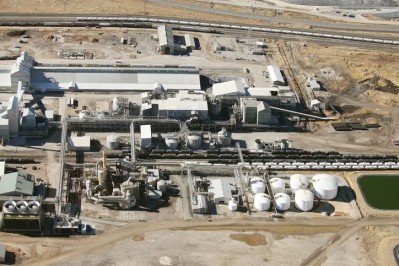Exclusive Interview
Asia still fueling demand as feed phosphate capacity set to rocket by 2017

Inorganic feed phosphates are a high quality phosphorus source for animal feed and demand has doubled in the past ten years with China accounting for 27% of usage, said Alberto Persona, phosphates research analyst, at CRU.
The pig sector in China and the burgeoning poultry and beef livestock industries in Brazil, in particular, are fuelling demand, said the analyst.
But, talking to FeedNavigator, he notes that the use of IFP in aquaculture is intensifying in China and in South America, making it a feed phosphates growth segment though a relatively small one.
CRU has factored in aquaculture usage into its growth projections for the IFP sector up until 2017 with global demand forecasted to hit 8.5 million tons (41% P205) by then.
“Its good news for European producers of IFP too as the quality of their phosphates is rated the highest globally.
As the aquaculture sector in Europe is relatively mature compared to the Latin American and Asian sectors, EU sourced feed phosphates come with a high level of solubility which allow a reduction in phosphorus residue levels in water, and enable fish producers in other markets to meet tight environmental controls,” said the analyst.
CRU data puts existing global capacity for IFP at 14.4 million tons but the research firm predicts a hike of 3.4m tons in three years due to various production expansion plans at IFP manufacturing sites globally – placing capacity around the 17.8m ton mark by 2017.
Capacity development projects underway
One of the most prominent players in the feed phosphates business is Moroccan based OCP, which Persona said is hoping to gain a larger foothold in Brazil after its conversion of a chemical plant at the Safi Industrial complex to IFP was recently realized.
“OCP had some problems with feed phosphate quality in terms of bringing this former fertilizer plant on stream, which hit costs, but the producer is now ready to ship product to Brazil with the first batches likely to be export ready by July or August this year."
But OCP faces stiff competition from US producer Mosaic in Brazil and in order to win more market share there, the Moroccan group has invested in Brazilian distribution facilities under the name OCP Fertilizantes, said Persona.
“The new distribution network is essential to try and capture the feed market in that country, with end users requiring delivery of IFP in small batches. OCP can now store its feed phosphate in warehouses and then deliver it locally to end users in the scale needed, which was not possible for the Moroccan producer beforehand.
"While in a better supply position, OCP, of course, still has to secure contracts in Brazil,” said the analyst.
In terms of Middle Eastern IFP players, Saudi producer, Ma’aden Phosphate Company, is planning to expand its capacity significantly to meet demand in South East Asia, India, Oceania and Eastern Africa, said Persona.
While the project has gone beyond the feasibility stage, plant construction has not yet kicked off, he added.
Meanwhile, capacity expansion plans by the leading South American producers in bid to lessen the continent’s dependency on imports have not yet reached fruition, said the analyst.
And Persona said there is nothing concrete coming out of Russia as to whether capacity projects, that had been set to come on-stream in 2016, were green-lighted.
Consolidation in Europe
The European feed phosphates market has seen some drop off in capacity with plant closures in the past year leading to even greater consolidation in the region and tighter pricing.
January this year saw French animal nutrition company Timab, part of the Roullier Group, buy the IFP facilities in Spain previously managed by Ercros, while Tessenderlo closed their phosphate operations in Belgium and sold their Dutch assets to EcoPhos in November 2013.
Fosfitalia and Yara are the other two big players in the European industry, said the analyst.
Yara is a major exporter while Fosfitalia focuses on the Italian market only.
Phytase and other substitutes
Persona said that the use of phytase as an IFP alternative in the European and North America markets has reached maturity based essentially on ever-increasing regulation and phytase’s poor environmental profile in terms of phosphorus run off into groundwater.
“Europe and North America replace about 9 to 10% of phosphate with phytase. It is in China that we see continued growth for the phytase market but only for the next five years when it is likely to level off, again due to tighter environmental controls there,” said the UK based analyst.
The ability of the byproduct of bioethanol production - distiller grains (DDGS) - to take market share from the IFP segment is also limited by regulation on the US bioethanol industry in terms of the ratio of ethanol it can now use in its gasoline blends. “These constraints will stifle the potential for growth in that sector and subsequently limit DDGS output."
Pricing trends
Persona notes that IFP pricing trends generally have remained relatively stable in the past few years with supply contracts tending to hedge against any risk on the farmers’ side and IFP producers generating consistently high margins on sales.
“China is where we do see price fluctuation in feed phosphates. The monocalcium phosphate (MCP) segment there is highly competitive as the US producers are trying to displace the Chinese firms, bringing in large cargo freights of MCP feed phosphates to beat them on price and quality."
Chanhen and Lomon are the only two MCP producers in China.
Persona said that prices are also quite volatile in the South East Asian markets of Thailand and Malaysia, which are also quite competitive IFP markets.















